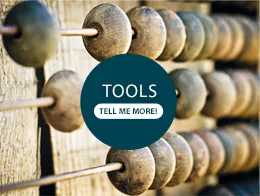On the fringe of San Francisco’s Financial District, an unlikely hub for entrepreneurs is celebrating a successful first year. Among big banks, giant tech companies, venture capital funds, and seemingly endless coffee shop offerings, the Nasdaq Entrepreneurial Center — operating as a 501(c)3 nonprofit and essentially serving as Nasdaq’s corporate social responsibility arm — has become a haven for “underserved entrepreneurs.” The 13,000-square-foot center is a space for entrepreneurs to network, learn from workshops, and even lead their own — not exactly an accelerator, but a place for those who want to develop their entrepreneurial chops without the pressures that can come at an incubator or accelerator.
“By design, some of the applications to get into the big accelerators and incubators are focused towards highly educational individuals who know how to fill out applications,” Colin Mahin, the center’s community manager, tells We See Genius. “But where does the underserved market of entrepreneurs go?”
For the past year, they’ve gone here — and they’ve visited in droves. According to Mahin, the initial goal of the Nasdaq Entrepreneurial Center was to serve 2,000 entrepreneurs in the first year. By early September, 2,700 had used the center’s resources, of whom Mahin says some 20% have been social entrepreneurs or nonprofit founders. One reason for the massive number of people using the space is that it is open to any and all entrepreneurs: For example, Mahin says, 46% of the 2,700 users have been women, a much higher percentage than virtually all other accelerators and incubators in the area.
“We have the approach that we are going to support every stage and industry of entrepreneur,” Mahin says. “Silicon Valley and the Bay Area in general have a lot of tech focus. A lot of the accelerators and incubators in the area are very focused on this 100x growth — Mark Zuckerberg-looking types.”
What are they looking for?
“Our idea of an entrepreneur here is anyone who is spending 60 hours a week to tackle challenges and make the world a better place,” Mahin says.

Inside the center. Photo by Nathan Allen
FROM ‘BUNNY RUNS’ TO ‘BLACK DIAMONDS’
Another bonus? All of the resources are free. “We don’t take equity,” Mahin says. “We provide all of our resources free for entrepreneurs.”
Those resources include workshops that run the gamut from harnessing one’s “super powers” to exit strategies, prepping for acquisitions, and solving product market fit problems. The center also provides downloadable resources on media training and topics that range from negotiating term deals to overcoming a fear of public speaking.
Mahin calls it “à la carte” programming. “If you were to envision us like a ski mountain, we have bunny runs — like the business foundation stuff. And then we have black diamonds — like exit readiness and how to groom yourself for an IPO,” he says, noting that workshops have been attended by everyone from entrepreneurs running companies of two or three employees to founders of ventures that now employ hundreds of people.
A PLACE FOR ALL SORTS OF ENTREPRENEURS
One of those to take advantage of the Nasdaq Entrepreneurial Center is Neetal Parekh, a former attorney turned social entrepreneur who runs Innov8Social, a platform that curates and builds tools for other social entrepreneurs. Parekh was in law school when she learned something that would eventually inform her current pursuits. “The way corporate law is structured is not incentivized for companies to do good,” she says. “It can be a byproduct, but it is not necessarily part of the success metric of a corporation or shareholders.”
In 2011, when Parekh was working as an online content producer for FindLaw, an online legal service platform, she started noticing more and more articles about the legal structure of Benefit Corporations. She also noticed a growing social innovation movement. So in June 0f 2011, Parekh launched Innov8Social to corral all of the tools flying around and address the sometimes-overwhelming amount of information available to social entrepreneurs that Parekh calls a “paralysis of analysis.” Around that time, the California Legislature was working to pass AB 361, the state’s Benefit Corporation bill, spurring Parekh to drive the roughly 90 miles from the San Francisco Bay Area to Sacramento to support its passage. On January 1, 2012, California joined Hawaii, Vermont, Virginia, and Maryland in establishing a legal structure for Benefit Corporations, corporate entities whose legally defined goals include not just profit but also positive impacts on society. Now, some 31 states have passed some form of Benefit Corporation legislation.
Parekh met Mahin at the Nasdaq Entrepreneurial Center in 2015 during a “Shark Tank”-style pitch competition, and he explained that the center was exactly the type of place Parekh could meet more social entrepreneurs who might be interested in her platform. She came back for a media and storytelling workshop and was hooked. “Nasdaq has such a strong name behind it. And since it’s a nonprofit, they are giving everything away for free,” Parekh explains. What’s more, she says, the Nasdaq name draws more than just socially minded entrepreneurs — and that can be a good thing. “Social entrepreneurship is part of entrepreneurship, so a lot of the needs are the same,” she says. “You have to talk about business models and legal structures. It’s just with social entrepreneurship, you’re also trying to factor in impact.”
Mahin sees it the same way.
“Social entrepreneurs face the same challenges every business owner does,” he says. “They just have different goals in mind. We find the more different people we have in the room, the more rich the conversations are that they end up having.”
TURNING SMALL BUSINESS OWNERS INTO ENTREPRENEURS

Inside the center. Photo by Nathan Allen
From taking workshops to leading her own to using the center’s recording room for podcasts, Parekh has taken full advantage of the center’s resources, and even given some of her own resources back in the past year. She says the network of people who use the space and the mission of Nasdaq’s nonprofit are two big draws for her. “Their mission is a thread that goes through everything they do,” Parekh says, adding that location — in the heart of San Francisco — is a bonus. “You really have your finger on the pulse of what’s happening in the area.”
Indeed, the space is in an ideal location and certainly doesn’t look like a stereotypical nonprofit. It has couches, space-age recliners, and flashy lights. Along with Nasdaq, KPMG, Thomson Reuters, and GE Ventures have donated to the center. According to its latest tax filings (2014 Form 990), the center was gifted more than $10.5 million to operate. Despite the space looking like any other Bay Area entrepreneurial hub, Mahin insists it operates much differently than the Y-Combinators and RocketSpaces of the world. Being in those co-working accelerators, he says, is more akin to operating in a pressure cooker for a few months and then getting one shot at an investor meeting that may or may not happen.
“You work day-in and day-out on this product for months and you may not get a meeting,” he says. “There are only a few winners there.”
But at the Nasdaq Entrepreneurial Center, Mahin says, people can come and go as they please and use the resources as much or as little as they like. And while success might have a very definite aspect at many accelerators, at the Nasdaq center, whatever the individual entrepreneur views as success, is success. To Mahin, that’s a subtle but powerful paradigm shift.
“My main goal,” he says, “is to change the paradigm from ‘I’m a small business owner’ to ‘I’m an entrepreneur.'”
SEE ALSO THE TOP INCUBATORS AND ACCELERATORS



